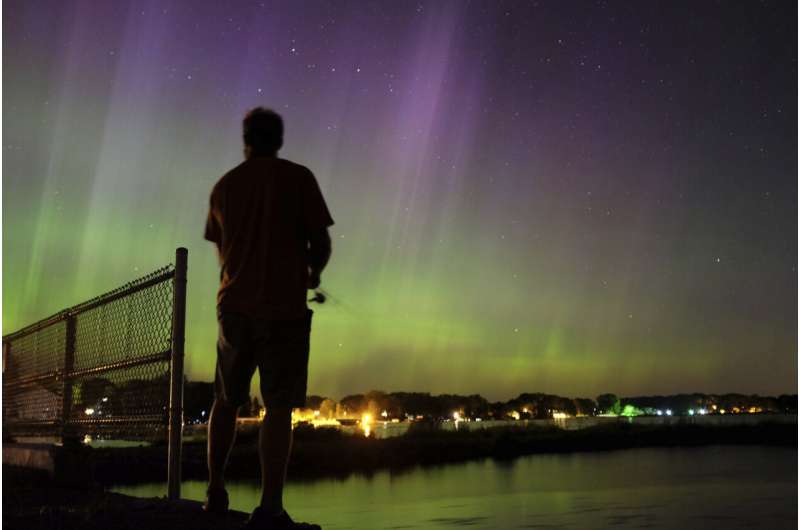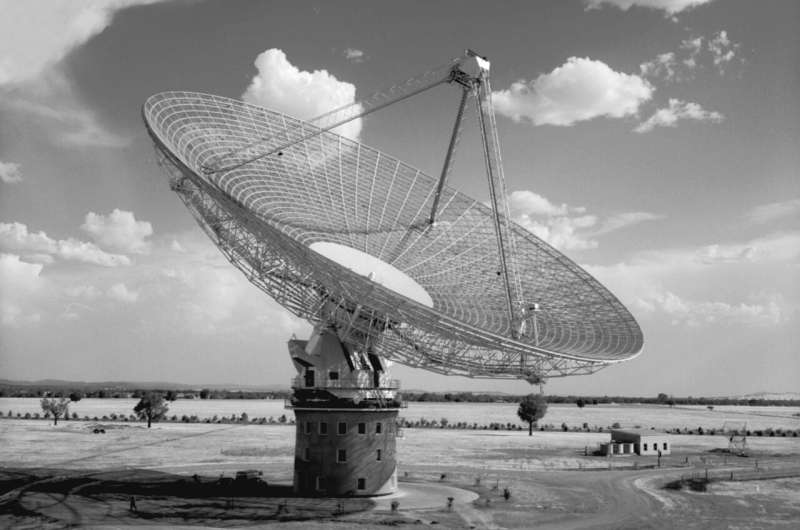
Copernical Team
Satellite images show positive impact of conservation efforts for China's coastal wetlands
 Coastal wetlands support diverse and vital ecosystems central to coastal areas' biodiversity and economic vitality. However, coastal wetlands are threatened by sea level rise that can lead to flooding and land use changes that alter the way people can live or work in these areas. These impacts are large. Approximately 600 million people live less than 10 meters, approximately 6 miles, above sea
Coastal wetlands support diverse and vital ecosystems central to coastal areas' biodiversity and economic vitality. However, coastal wetlands are threatened by sea level rise that can lead to flooding and land use changes that alter the way people can live or work in these areas. These impacts are large. Approximately 600 million people live less than 10 meters, approximately 6 miles, above sea Carbon nanotubes could help electronics withstand outer space's harsh conditions
China's conducted 100s of hypersonic weapon tests
 Gen. Hyten's remarks come a week after a failed US hypersonic test and as tensions between the US and China over Taiwan, which the latter considers as an integral part of its territory, remain high, as well as recent reports of China allegedly conducting a successful test of a new potentially nuclear hypersonic missile in August.
Following China's purported test of a hypersonic missile, th
Gen. Hyten's remarks come a week after a failed US hypersonic test and as tensions between the US and China over Taiwan, which the latter considers as an integral part of its territory, remain high, as well as recent reports of China allegedly conducting a successful test of a new potentially nuclear hypersonic missile in August.
Following China's purported test of a hypersonic missile, th NASA, SpaceX reschedule Crew-3 launch due to weather
 NASA and SpaceX on Saturday scrapped plans to send astronauts to the International Space Station after a large mid-Atlantic storm caused weather issues along the flight path.
The Crew-3 launch, which was set to launch Sunday, is now scheduled to take place 1:10 a.m. EDT Wednesday, when weather conditions were expected to be 80% favorable. The NASA astronauts will launch on SpaceX's Crew
NASA and SpaceX on Saturday scrapped plans to send astronauts to the International Space Station after a large mid-Atlantic storm caused weather issues along the flight path.
The Crew-3 launch, which was set to launch Sunday, is now scheduled to take place 1:10 a.m. EDT Wednesday, when weather conditions were expected to be 80% favorable. The NASA astronauts will launch on SpaceX's Crew Space business opportunities in the Netherlands
 In Noordwijk the Netherlands, a new Space Campus is arising. In the next coming years, new office buildings and facilities are being constructed. NL Space is home to ESA's technical heart, the European Space Research and Technology Centre (ESTEC), the Galileo Reference Centre (GRC - EUSPA), SBIC Noordwijk and Space Expo.
With the development of this Campus, Noordwijk is the ideal location
In Noordwijk the Netherlands, a new Space Campus is arising. In the next coming years, new office buildings and facilities are being constructed. NL Space is home to ESA's technical heart, the European Space Research and Technology Centre (ESTEC), the Galileo Reference Centre (GRC - EUSPA), SBIC Noordwijk and Space Expo.
With the development of this Campus, Noordwijk is the ideal location ESA accelerates space-based climate action at COP26

ESA is poised to showcase how satellite data underpins global efforts to avert climate catastrophe at pivotal international talks held in the UK.
Antarctic glacier named Glasgow to mark COP26

Nine fast-flowing glaciers in West Antarctica have been named after locations of important climate treaties, conferences and reports. One of the glaciers is now called Glasgow Glacier to mark the city hosting the COP26 climate change conference. All the glaciers are in the Getz region, which, using data from satellites, was found recently to have lost more than 300 gigatonnes of ice over the last 25 years.
SpaceX delays astronaut flight due to rough wind, waves

To star gazers: Fireworks show called Northern Lights coming

The Parkes dish is still making breakthroughs 60 years after it first gazed at the skies

The CSIRO's 64-meter Parkes Radio Telescope was commissioned on October 31 1961. At the time it was the most advanced radio telescope in the world, incorporating many innovative features that have since become standard in all large-dish antennas.
Through its early discoveries it quickly became the leading instrument of its kind. Today, 60 years later, it is still arguably the finest single-dish radiotelescope in the world. It is still performing world-class science and making discoveries that shape our understanding of the Universe.
The telescope's origins date back to wartime radar research by the Radiophysics Laboratory, part of the Council for Scientific and Industrial Research (CSIR), the forerunner of the CSIRO. On the Sydney clifftops at Dover Heights, the laboratory developed radar for use in the Pacific theater. When the second world war ended, the technology was redirected into peaceful applications, including studying radio waves from the Sun and beyond.
In 1946, British physicist Edward "Taffy" Bowen was appointed chief of the Radiophysics Laboratory. He had been one of the brilliant engineers, dubbed "boffins," who developed radar as part of Britain's secret prewar military research.
